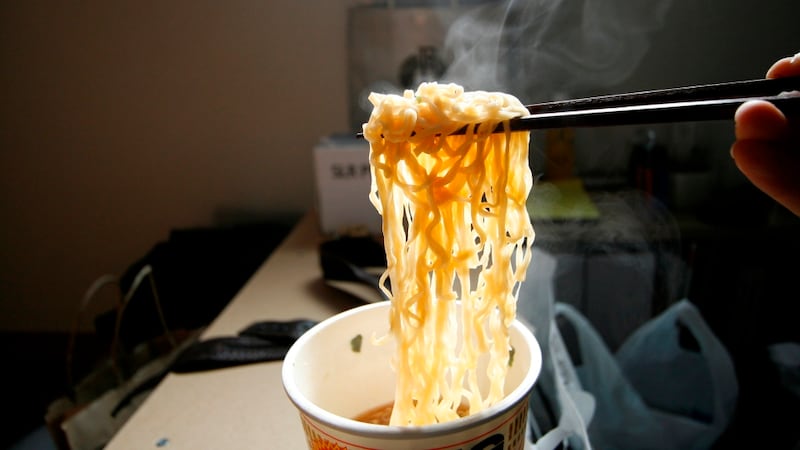Every Japanese prefecture has its trademark noodle dish. Hiroshima has roasted noodles. Sapporo has miso-flavoured ramen. Tokyo blends soya with dried tuna stock. It’s easy for discerning noodle gourmets to identify Tokyo noodle soup: it has a boiled egg floating in it.
Yokohama's Shin-Yokohama Raumen Museum (raumen.co.jp), part of a reproduction 1950s shitamachi village and modern food amusement park, charts the history of the versatile staple. It houses a unique selection of noodle bowls and other noodle-orientated paraphernalia. Also on display, along with rare noodle restaurant matchbooks and chopstick wrappers, is a replica of the first noodle dish ever eaten, by, it is said, samurai warrior Mito Komon.
There’s also a permanent exhibition of pot noodle cartons – the world’s largest, protected behind thick glass.

The museum walls are informative, teaching you that soba noodles are made from buckwheat and that udon uses wheat. Yellow noodles are coloured by egg. Black by cuttlefish. Red by apricot. Brown by yam and green by tea.
The museum has eight restaurants, period period holes-in-the-wall in narrow alleys hung with "period" laundry. Atmospheric sound effects come from charumera horns.
Five million bags of noodles are consumed in Japan every year. The first instant bagged noodle appeared in 1968 and the first mugged noodle snack in 1992. Perhaps the most momentous event in the whole history of noodle-making came in the 12th century, when noodles assumed their modern elongated ribbon-like form. Previously, they had been square.
Eating noodles is a specialised skill. Some practitioners believe you should drink the liquid first and then slurp the noodles before they get mushy. You must never chew noodles – they lose their flavour when chewed. Vile gulping and disgusting guzzling sounds are de rigueur. It implies a healthy appetite and pleasure in eating. It’s a compliment.
There is also the Cupnoodle Museum (cupnoodles- museum.jp), devoted to the inventor of instant “Cup” noodles.
“That is the great Momofuku Ando,” said a passerby, seeing me staring at a statue of a man holding a paper bag. “He founded Nissin Food Products division. He’s a Japanese hero.”
Ando came up with the idea for instant noodle to undercut standard, raw ramen. The first bags of pre-precooked chicken ramen went on sale in 1958. In 1971 he came up with the Cup Noodle, inspired by the American invention of “dunking”.
Ando was awarded The Order of the Rising Sun , the second most prestigious decoration for Japanese civilians. The US city of Dallas holds a special Momofuku Ando Day in January to commemorate the genius who has fed billions, cheaply.
I did the tour, paying my respects at the mock-up of Ando’s research workshop. I did the tunnel plastered in labels from all around the world. A huge queue of schoolchildren were all hot and sticky after playing among giant upturned Styrofoam cup noodle cartons.
I looked at the bag in the great man’s hands. The sculptor had forgotten the cooking instructions. As well as expiry date, salt, sugar and saturates content.
And allergy advice.









